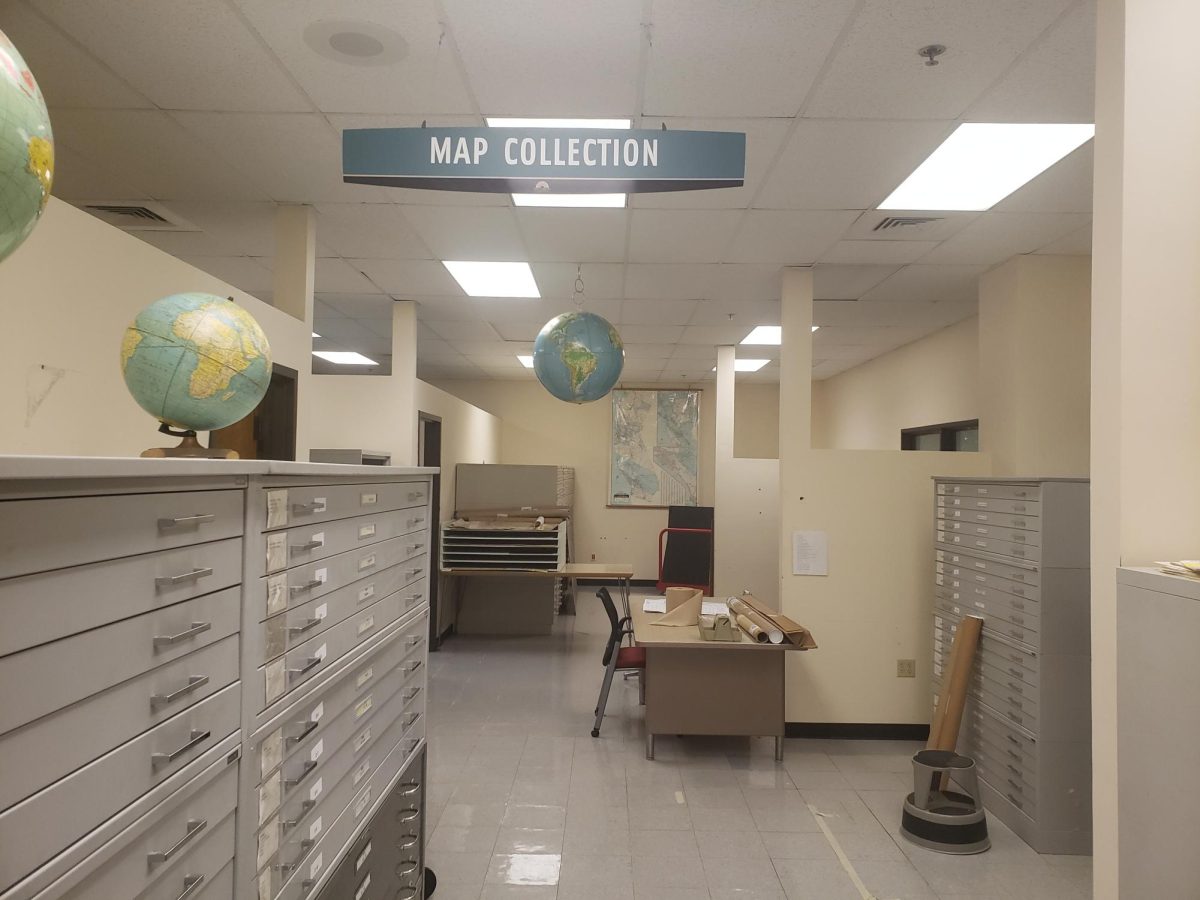The average San Diego State University student might not realize that right within the library, there are copies of decades old artifacts quietly resting in the map and microform room, two unfrequented collections.
The map collection includes maps depicting Cairo, oil wells, California roadways and more in their past forms from over one hundred years ago. Similarly, the microform room contains scaled-down reproductions of journals and newspapers, including Chinese newspapers dating back to the 1800s.
The collections are located next to each other on the 1st floor of the Love Library in rooms 73 and 74. Access to the map room is available by appointment only through Head of Collections and Development Wil Weston, responsible for organizing and preserving materials in both rooms.
“I think the map room is important due to its apparent size and quantity,” said third-year history major Jack Budd. “I don’t think the majority of the people at the university know of its existence. It is a very extensive resource that you should use.”
The collection has problems other than just a lack of awareness, however.
“The core problem is the same core problem that exists across this campus,” Weston said. “We need people. That costs money. I think in many cases some of this work could be done or facilitated by students but we’ve been cut back on student labor, too.”
The process of organizing and digitizing maps before they degrade is a long one that may take a decade or more to finish, according to Weston. Still, there are many digitized maps already available for students to access via the SDSU Library website.
The microform collection has similar issues with digitization.
“It will last a very long time but as we’re finding out now it does decay,” Weston said.
Students can use machines located in the microform room to read the microfilm and potentially use them as a primary source on their assignments.
“That sometimes can be a barrier, you know, if you want to do research at home you kind of can’t,” Laurel Bliss, SDSU Fine Arts librarian, said. “You have to be here for that.”
This collection is open to students without any appointments and, if locked, can be opened by asking for assistance at the nearby help desk, according to Weston.
One of the most concerning collections of items in the microform room for Weston are the Chinese newspapers. Many are from the 1800s to 1940s, before the communist party assumed power.
“I’m not an expert,” Weston said. “I don’t know if those have been preserved or not in China or elsewhere. I know in the United States when I have looked up a couple of these titles they don’t exist anywhere else except here in microform. So that’s another reason why they’ve risen to become a priority.”
They aren’t expected to be a problem for another decade or two but the materials are beginning to degrade.
“I worry that because it’s not something that’s literally on fire, it’s sometimes harder to get people motivated to do something about it,” Weston said.
According to Weston, he hopes more students become aware of the collections and that he can get more help in both organizing and preserving the resources found there.
“It would be nice to have more students,” Weston said. “It would be nice to have at least one staff person who would help me down here. But I also know that there are… other competing needs.”









